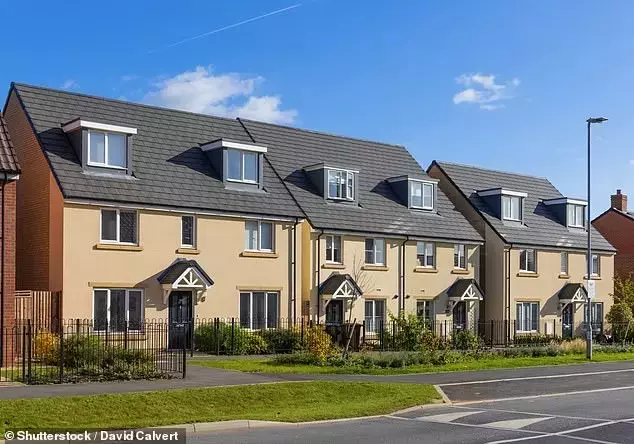



The British housing market is currently experiencing a complex phase, marked by contrasting trends in property values. While detached and semi-detached houses continue to see appreciation, the market for flats and properties in the capital, London, is facing a notable decline. This divergence in performance, combined with a general slowdown in transaction volumes and increasing price reductions, paints a picture of a cautious market influenced by economic uncertainties and potential future tax reforms.
UK Property Market Shows Mixed Performance: Houses Rise, Flats and London See Declines
London, UK \u2013 October 22, 2025 \u2013 The latest statistics from the Office for National Statistics (ONS) reveal a varied landscape across the United Kingdom's property sector. As of August, the average price of a home nationwide experienced a slight upward trend, increasing by approximately \u00a38,000 over the last year, pushing the typical property value to \u00a3273,000. This represents a 3% rise compared to the previous year and an 0.8% increase within the last month alone.
However, this national average masks significant regional and property-type disparities. Notably, semi-detached houses have outperformed other segments, recording a 4.9% year-on-year price increase. In stark contrast, flats and maisonettes have witnessed a decrease, with their average prices falling by 0.2% over the same period. The situation is particularly challenging for flat owners in certain areas; England saw an average 0.8% drop, Wales experienced a 1.4% decrease, and London's flats plummeted by 2.6%.
Geographically, property value growth is more pronounced in the northern regions of the country. For instance, the North East reported a robust 6.6% annual increase, while London, traditionally a stronghold of property appreciation, saw its prices dip by 0.3%.
Industry experts are closely monitoring these shifts. Jonathan Hopper, CEO of Garrington Property Finders, commented on the challenging environment for selling flats, noting that \"months of stagnating prices have turned into falls,\" while detached house prices continue their upward trajectory. Richard Donnell, Executive Director of Research at Zoopla, attributed the slowing overall market growth to \"Budget uncertainty,\" which he believes is leading to reduced sales activity and buyer demand.
Further insights from the Royal Institution of Chartered Surveyors (RICS) and property data firm TwentyCi corroborate this cautious sentiment. The recent RICS survey indicated that more members are observing price reductions than increases, alongside a second consecutive month of declining new buyer inquiries and agreed sales. TwentyCi's data highlighted a significant surge in asking price reductions, with 918,585 cuts made year-to-date in 2025, a 16% increase from the previous year. Additionally, abandoned property sales have risen by over 9% compared to 2024, signaling heightened market hesitancy.
The current market dynamics underscore a significant shift, favoring buyers who are prepared to negotiate. With an imbalance between available properties and buyer demand, purchasers are leveraging their position to secure substantial price reductions. This has led to a \"two-speed market,\" where those with an urgent need to move are pushing forward with aggressive negotiations, while discretionary buyers, especially those targeting higher price points, are adopting a wait-and-see approach, anticipating potential tax changes in the forthcoming Budget.
The evolving landscape of the UK housing market, as detailed by recent official statistics and expert analyses, offers several key takeaways. Firstly, the market is no longer monolithic; specific property types and geographical regions are experiencing vastly different fortunes. This necessitates a more granular understanding for both buyers and sellers, moving beyond broad national averages. Secondly, economic and political factors, such as upcoming budget announcements, wield considerable influence, creating periods of uncertainty that directly impact transaction volumes and pricing strategies. Lastly, the current environment empowers buyers, particularly those willing to engage in robust negotiation, to secure more favorable deals. This period of adjustment could redefine investment strategies and housing accessibility for various segments of the population, emphasizing the importance of informed decision-making in a fluid market.
